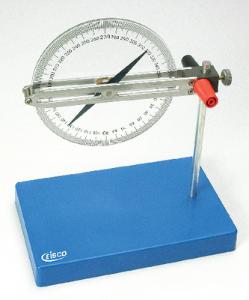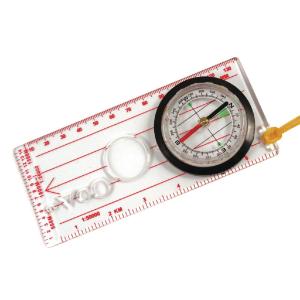Orient Your Class to Magnetic Compass Science
Middle School
Nowadays, when we think of finding our way around while driving, hiking, or walking in new places, our cell phone is the go-to device for most of us. But what happens when batteries die, the GPS signal gets lost, or… cue scary music…we run out of data?
The young explorers in your class may be surprised to learn a good old-fashioned compass is the tried-and-true navigational device that can come to the rescue! Help students navigate their earth science and other STEM coursework with the facts about the magnetic compass.
What is a magnetic compass?
Orienteering is a competitive sport where participants use navigational skills to find their way to various checkpoints. Any orienteer enthusiast will tell you that while satellite and computer technology may have introduced more advanced navigation systems, nothing beats a simple compass to develop navigational skills, and it’s a lot of fun too!
Although we rarely use this nifty little gadget today, it truly changed the world. A compass uses the Earth's magnetic (geomagnetic) field to show direction.
There are simple and complex compass designs, but in its simplest form, a compass consists of a casing with markings for north, east, south, and west. It also has a magnetic pin mounted on a nearly frictionless pivot so it can easily turn.
A compass detects the Earth’s natural magnetic fields. Since opposites attract, the southern pole of the needle is attracted to the Earth’s natural magnetic north pole. This is how navigators can identify which way is north.
What is magnetic declination?
To make things more interesting (or annoying) for navigators, the Earth’s magnetic core doesn’t run exactly along its rotational axis; it’s skewed slightly off center. This skew is called declination. And, of course, declination changes a little depending on where you are on the planet (more “fun” for navigators). In scientific terms, declination is the angle between magnetic north (the direction the north end of a compass needle points) and true north.
Ask students to consider why and how declination differs from magnetic inclination, which is the angle a compass needle makes when the compass is held in a vertical orientation. They can investigate why positive inclination values indicate that the field points downward into the Earth.
What is Oersted's Law?
Compasses also come in handy when teaching electricity and magnetism. Oersted's Law demonstrates that a magnetic compass shows the presence and direction of the magnetic field around a straight length of current-carrying wire. The magnet's direction is parallel to the magnetic field around the wire.
You can have students compare the compass reading to an even simpler method, the right-hand rule!
Show students how they can use the right-hand rule (a hand mnemonic) to help remember the direction of magnetic forces. To form the mnemonic, make an L-shape with the thumb and first two fingers of your right hand. Then, point your middle finger perpendicular to your thumb and index finger like this:
Challenge students to consider what would happen if they used their left hand instead (hint: think polar opposites).
Use these demonstrations to help explain the physics behind magnetic fields and the forces they exert on moving charges—it’s an easy way to remember the directions that things are supposed to point.
Armed with your lessons and a top-notch magnetic compass, the students in your class will be prepared to become champion orienteers or electrical engineers!
1. B. A. Buffett. Earth's Core and the Geodynamo. Science, vol. 288
Recommended Products
[StartProductBlock]

Magnetic Field Inclination/Declination Demonstration Compass
A concrete visual illustration of the Earth's magnetic field while demonstrating the "Thumb Rule" with this compass.
[EndProductBlock]
[StartProductBlock]

Orienteering Compass
For reading topographical and tourist maps and determining the azimuthal location of a given place suitable for overhead projection.
[EndProductBlock]
[StartProductBlock]

Small Magnetic Compasses
Economical magnetic compasses are suitable for tracing the magnetic fields of bar magnets. Pack of 12.
[EndProductBlock]
